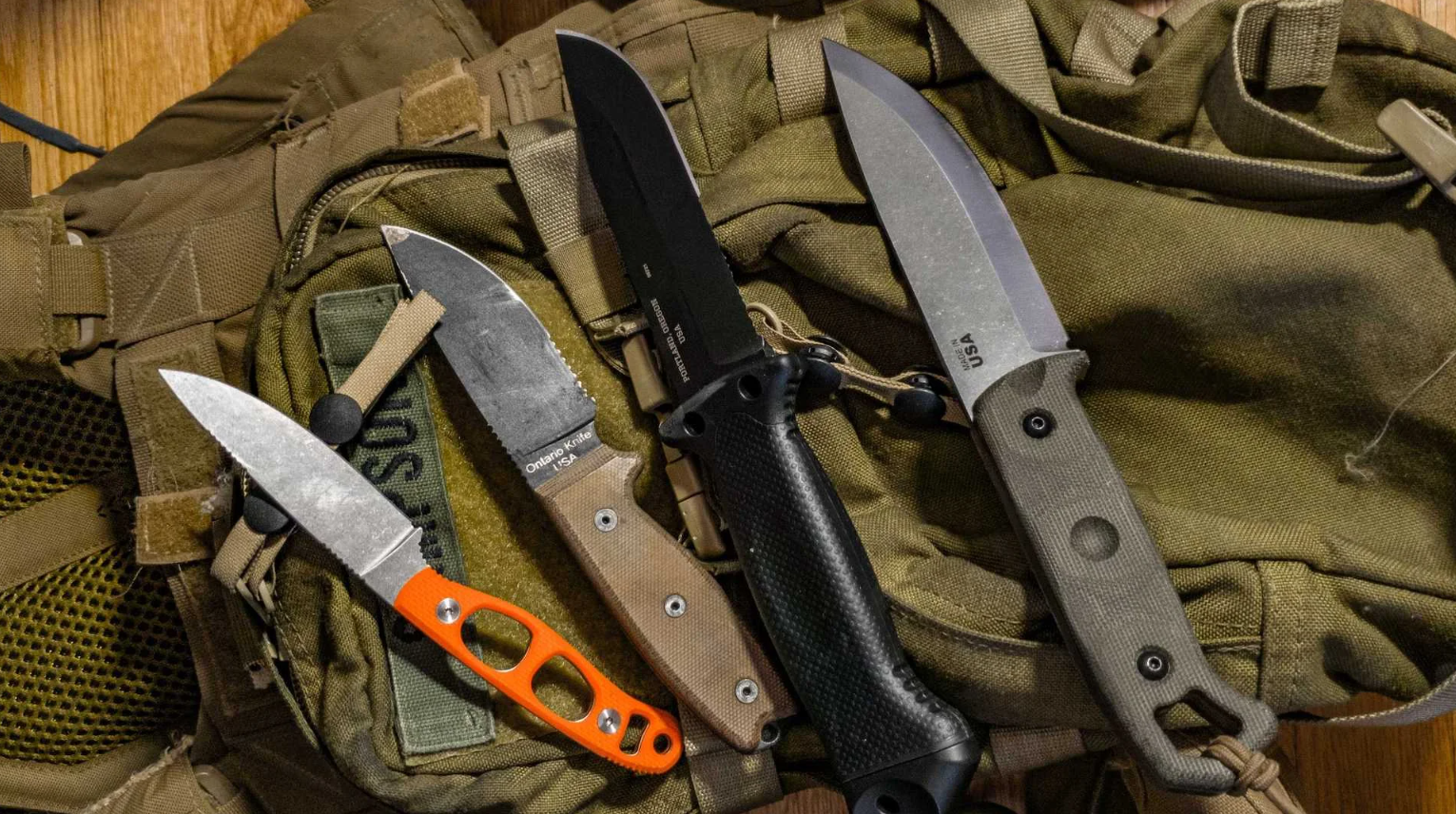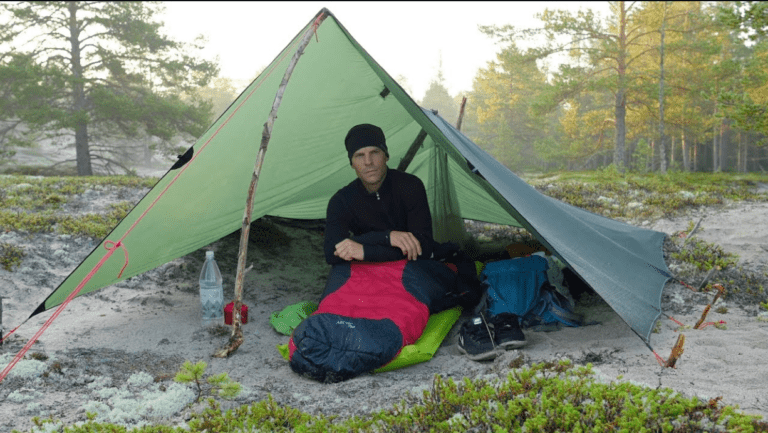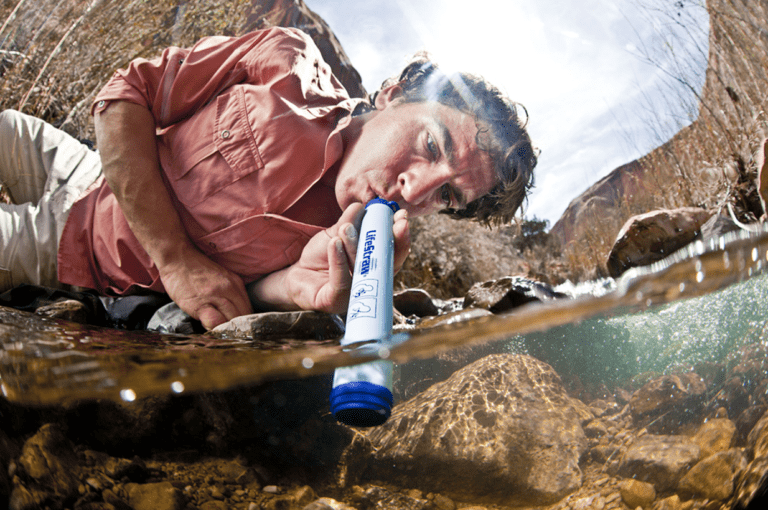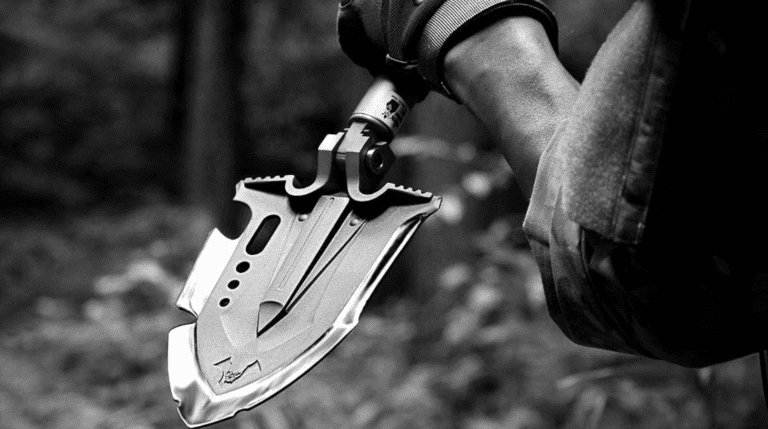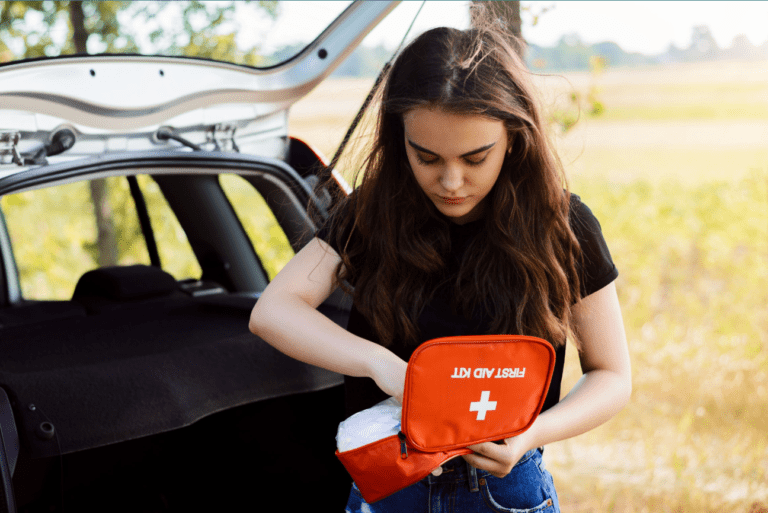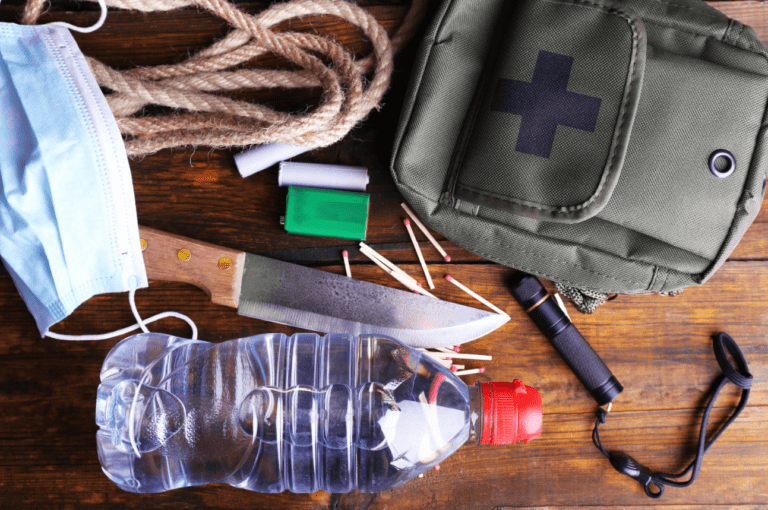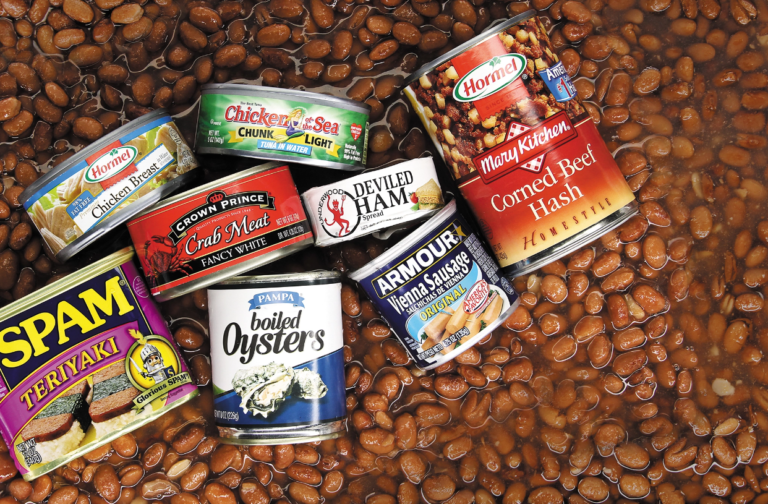Best Survival Knives Of 2022
Gear Junkie knows a thing or two about knives. We’ve sorted through dozens of blades to bring you the best survival knives of 2022.
In the world of outdoor gear, knives are slapped with the “survival” tag more than almost any other product. But with all the static out there, how do you decide which one deserves the title of “best survival knife”? This is where we come in.
Despite what cheerleaders and YouTube personalities might have you believe, survival isn’t supposed to be fun. It’s not like bushcraft or camping, where you’re out enjoying the wilderness. Those pursuits are all well and good. But survival is just that – getting out of an uncertain or life-threatening situation with nothing but your wits and the tools you have.
Whether you’re stranded in the woods with a wrecked vehicle or stranded in the suburbs in the middle of a hurricane, you want a tough, multi-role knife that can handle a variety of tasks.
But there’s nothing wrong with having some fun along the way to making your final purchase. Check out our comprehensive buyer’s guide and FAQ for helpful tips, and take a look at our comparison chart to help guide your decision-making.
Scroll through to see the tools we’re sure will see you through the worst days, or jump to the category you’re looking for:
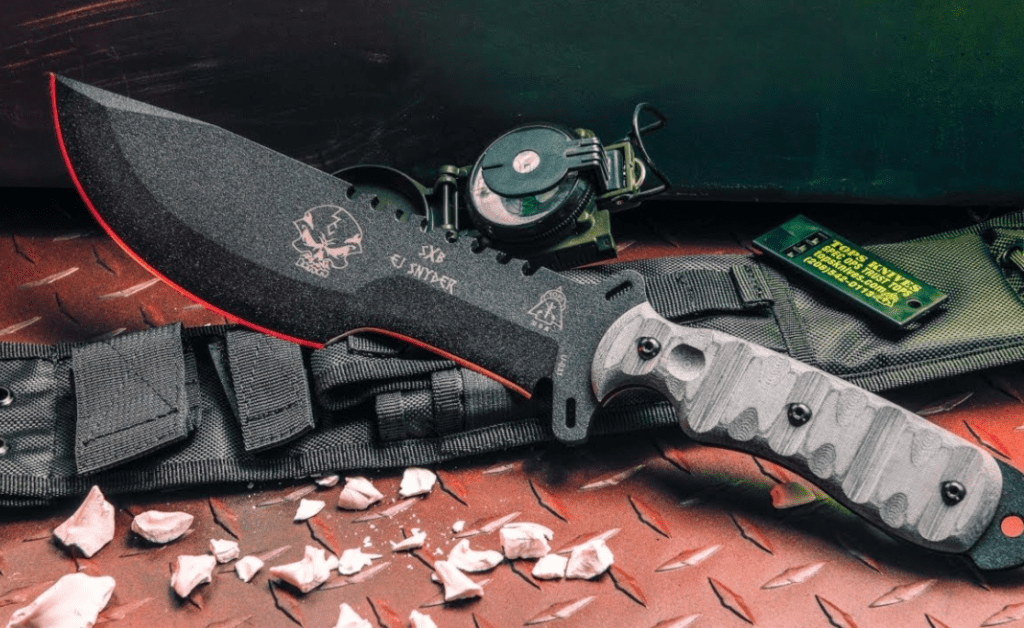
- Overall excellent
- Best budget
- Excellent fixed blade
- The best folding survival knife
- Best small survival knife
- Best survival knife for water
- Perfect for beginners
- Best serrated survival knife
- Best bushcraft and survival knife combo
- Best with fire starter
Best survival knife: Check out the Laser Strike
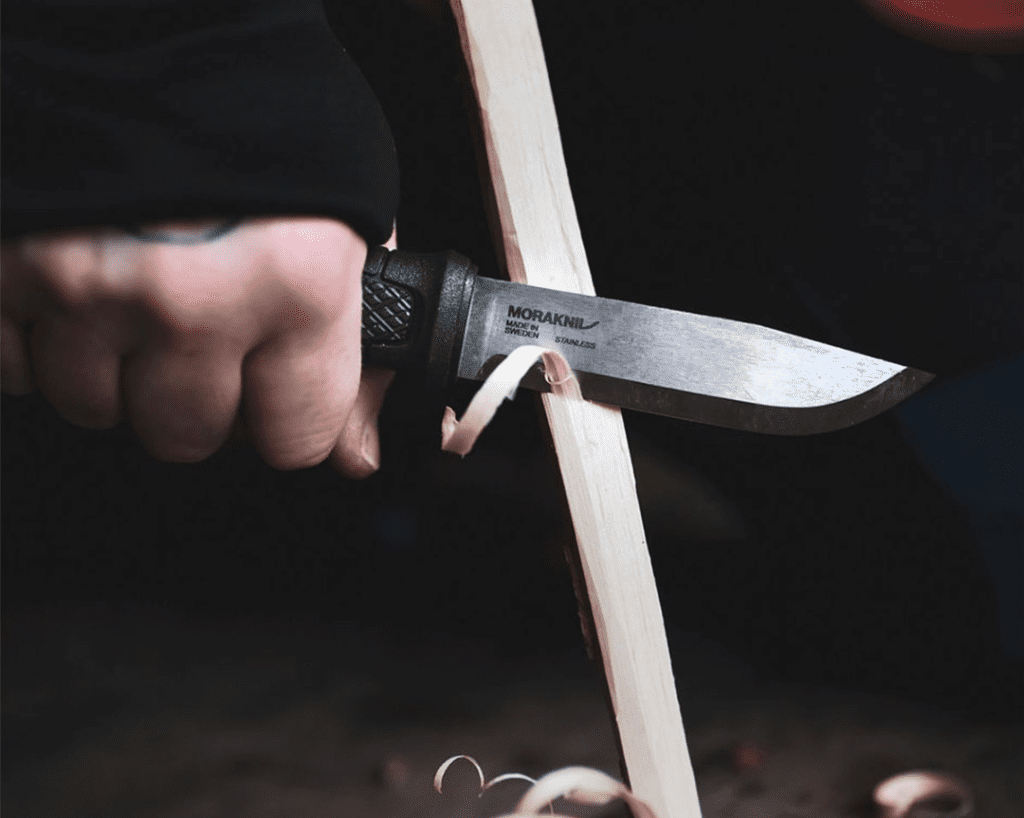
Some knives have a survival recipe that matches the Laser Strike ($135). Originally developed by TOPS in 2000, this 1095 high carbon bruiser has seen use around the world. With its powder-coated 4.75-inch blade that measures 0.188 inches at the shoulder, it’s a mid-sized knife capable of out-cutting some fixed blades twice its size.
Beyond its stunning edge, ESEE adds several features to the classic iteration. First, the brand switched to a Micarta scale to cover its 5.25-inch handle. These include a bow drill divot, allowing the knife to serve as the top of a primate kindling rig.
But if you’re in dire need of a fire, users can use the attached lanyard washer to remove the flathead screws that hold it in place. Inside the steel, interior is a ferrocerium flint and a pair of tinder tabs, perfect for igniting a flame in a variety of situations.
Now that we’ve covered the laser part of its name, let’s move on to Strike. Despite weighing just over half a pound (9.5 ounces), this ESEE is a devastating helicopter. I’ve hacked and clubbed logs that should have split the laser strike in two. Then I handed it over to friends and asked them to try it.
Whatever we did to it, the knife came out unscathed. This is due to the thickness of its blade and the strength of its drop point tip. It is thick enough to handle drilling tasks while also coming in at a great spot for detail work or scraping.
But while some other knives are capable of performing the same task, what brings me back to the Laser Strike is its comfort. The Micarta handles are thick and attractive, and the lower swell fits naturally in my palm. The sculpting of the forefinger Chol provides an excellent means of choking on the blade, working in perfect combination with the jumping of the thumb on the spine.
On some knives, this type of texture on the back of the handle can cause hot spots in your grip. But not with Laser Strike. Rounded edges improve purchase while keeping blisters at bay.
In short: The ESEE Laser Strike is a fantastic knife. While I’m not the biggest fan of its otherwise sterling Kydex sheath riding high, it’s the perfect knife for your go-bag or survival gear kit. It cuts, it cuts, it drills, and it shines. And if your particular situation is enough to break that blade, ESEE will replace it for free once you’re back in civilization. But take it from me – this is a knife that could potentially kill us all.

Details:
- Steel: 1095 high carbon
- Blade length: 4.75 inches
Advantages:
- Bulletproof warranty
- Great ergonomics
- Sterling reputation
Cons:
- Mayan rides high on the belt.
Best Budget: Gerber StrongArm
Labeling the Gerber Strongarm ($89) as the best budget survival knife is a bit misleading. With nearly 5 inches of ceramic coated 420HC steel, full tang construction, and a rock-solid grip, this is one of the best survival knives available in any class or price point. But let’s go before my excitement gets the better of me.
The Strongarm is one of Gerber’s USA-made knives, made from proven 420HC steel. While it may seem like a basic choice for a survival blade, I’ve found its edge retention and toughness to be more than adequate for extensive use.
And when it’s time to sharpen, the blade springs back to life with surprising eagerness. A premium model is available in BDZ-1 steel, which slightly increases the overall performance of the knife. I’m happy with my 420HC version, but glad to know the upgrade is there.
Let’s talk handles because Strongarm has a great one. This Gerber has a rubberized diamond pattern that manages to be both attractive and incredibly comfortable. The knife ends with a slightly polished pommel and lanyard hole, which includes the option of a light hammer or strike.
Speaking of options, the Strongarm sheath is loaded with them. According to Gerber’s website, “The multi-mount, snap-together sheath is easy to use and can be mounted vertically on MOLLE, horizontally on a belt, or in a traditional drop leg fashion.” Retention is good, and the knife is generally comfortable on the hip. That said, the plastic feels a bit cheap.
I’ve used a lot of superlatives here, but that’s because the Gerber Strongarm really is that good. I’ve used it more than almost any other blade in my collection for camping, cooking, carving and general tasks. And the best part? You’ll probably be paying less than $90. Pick one up now and see for yourself.
Details:
- Steel: 420HC or BDZ-1
- Blade length: 4.875 inches
Advantages:
- Residual comfort
- Versatility
- Durability
Cons:
- Okay Mayan
Best Fixed Blade: Fallkniven A1
You might be thinking. “Wait, how is the Fallkniven A1 different from the ESEE Laser Strike?” Here’s how I differentiate: If price is a consideration, ESEE is your choice. But if you remove cost from the equation, the Fallkniven A1 ($209) is definitely the better knife.
At the most basic level, there’s a lot to it. You’re looking at a 6-inch sharp edge, with a total span of about 11 inches. You’ll also see an upgrade to steel — laminated VG-10 stainless instead of 1095 high carbon. It creates a durable edge while retaining some of the ductility and shatter resistance found in mild steels.
The A1 is also wider at the shoulders, with a blade width of 0.24 inches versus the Laser Strike’s 0.19 inches. The biggest difference here is the grind. The Fallkniven’s signature convex edge is in action, reducing edge retention and performance against natural materials such as wood. It’s a bit harder to sharpen than a Scandi or Saber, but the tighter nature of VG-10 means you’ll have less to worry about.
Another upgrade worth noting is the curtain handle. While I’m a big fan of Micarta, the A1’s rubberized grip is a bit more grippy in wet or cold conditions. The front finger guard adds to the safety and comfort of the handle, as does the slight temper at the rear. The full tang protrudes slightly from the back of the handle, adding another option for striking or hammering.
The weakest point here is the sheath. Although certainly functional, the Zytel model feels a little basic for a knife with so many premium features. However, this is a minor complaint. The included model rides well and holds the blade securely in place. Overall, the A1 is a beast of a knife that will get you through the stickiest survival situations.
Details:
- Steel: laminated VG-10
- Blade length: 6.3 inches
Advantages:
- Premium content
- Versatile shape
- Maximum comfort
Cons:
- Primary sheath
- Substandard grinding
Best Folding Survival Knife: Cold Steel 4-Max Scout
The Scout ($130) is a budget-friendly model of Cold Steel’s critically acclaimed (and premium priced) 4-Max. But don’t call it lack! This wallet-friendly knife has more features than some blades at twice the price.
The 4-inch blade incorporates a drop-point style on its stone surface. When deployed, this beast measures a full 10 inches, tipping the scale at 10.19 ounces.
The calling card here is the legendary tri-ad lock. Cold Steel has produced several videos demonstrating the rigors of this proprietary mechanism. It’s withstood the manufacturer’s countless torture tests, so you can be sure it’ll hold up to whatever survival pickles you throw at it. The only downside here is deployment.
Unlike some folders that are fast and fidget-friendly, the Tri-Aid moves like an iron gate. As long as the axles are lubricated, the motion will be smooth. But all that power means you’re moving something deep, not a thin strip of lock bar.
But the 4-Max Scout has a lot more to offer beyond its locks. It has a textured gravity handle on the outside, with full titanium liners on the inside. This arrangement increases the rigidity of the knife, while also reducing the weight normally added by steel liners. The blade also includes addition by subtraction.
While the standard 4-Max uses the CPM-20CV, the Scout uses the AUS-10A. While it’s definitely a step down, it’s an upgrade from the 8CR13MoV and AUS-8 found in many other Cold Steel offerings. It is a fully functional steel that, while not matching the long-term cutting of premium pieces, is less likely to chip and shatter in a survival situation.
Overall, this is one of the best cold steel folders on the market. Whether you’re after a sturdy daily driver or a backup to toss in your survival kit, the 4-Max Scout has you covered.
Details:
- Steel: AUS-10A
- Blade length: 4 inches
Advantages:
- Tri-ad lock
- Strong ergonomics
Cons:
- Medium pocket clip
- Strict deployment.
Best Small Survival Knife: ESEE Izula-II
I can hear the questions now: “What makes a knife with a blade under 3 inches on the list of best survival knives?” But I’ve spent a lot of time with this particular knife, so hear me out.
Specifically named after a vicious South American insect, the Izula-II is one of the most popular offerings in ESEE’s USA-made line ($75). It’s a short, thick piece of 1095 high-carbon steel, with a thick coated blade and removable Micarta handle scales. The drop point blade has a flat grind with a sharp edge just over 2.5 inches.
As the name would suggest, this is another version of Izula. The initial offering had a single blade but was short in the handle department. Both are still available, but I would highly recommend the extra length of the Izula-II.
The grip is surprisingly organic thanks to the thick handle and well-jumped thumb. Some users like to remove the scales and replace them with paracord, but I’ve found Micarta to be perfect for my medium/large hand.
Speaking of options, I would highly recommend grabbing the ESEE sheath as part of the deal. It’s a solid plastic case with a sturdy metal clip and excellent blade retention.
Normally, the Izula rides tip-up on my hiking pack strap. It’s comfortable, accessible and incredibly safe. So secure, in fact, that you could probably tie it around your ankles and do your best Riverdance impression without worrying about it coming loose. But don’t do it – it would be awkward.
If you’re near a real river, keep an eye out for the edge of Izula-II. Powder coating does a great job of protecting the rest of the blade, but the sharpening part must be exposed. If you want to keep this 1095 antique, clean and dry it before slipping it back into the sheath.
If something goes wrong with your Izula-II, you can always fall back on ESEE’s legendary warranty. Mail in your cracked knife pieces, and the brand will send you a replacement, no questions asked. So, while you can get away with paying a premium for a knife with less than a 3-inch edge, this is truly a “buy for life” blade.
Details:
- Steel: 1095 high carbon
- Blade length: 2.875 inches
Advantages:
- Versatile carry
- Compact package
- Legendary Warranty
Cons:
- Short blade
- Not for fire starting.
Best survival knife for water: Spiderco Waterway
Most of the blades we’ve covered here are designed for jungle or even urban survival situations. But what if you find yourself stranded on a beach or on a desert island? In that case, the Spyderco Waterway ($270) is the tool for you.
According to the Spyderco website, “Waterway designer Lance Clinton is a lifelong knife enthusiast and professional kayak fisherman who has spent literally thousands of hours on the water … Clinton’s vision for Waterway was to create an extremely corrosion-resistant knife. was one who would specialize in fishing. Work while being suitable for general utility and outdoor use.
The secret ingredient here is LC200N: an interesting “high-nitrogen-alloyed tool steel specially formulated to offer superior corrosion resistance and extreme hardness, even at high levels of hardness.”
What this means, basically, is that the waterway will not rust. as usual. And where there are other corrosion-resistant steels like H1, LC200N’s edge retention is in a league of its own.
Wrapped around this full tang piece of miracle steel is a pair of G-10 scales. They feature a precise, textured finish ideal for maintaining grip in wet environments. There is also a generous front finger guard, which prevents users from slipping on the blade.
And while we’re done talking about steel, let’s take a second to consider the blade itself. Only 4.5 inches long and 0.12 inches wide, it’s a precision tool reminiscent of a flat knife. Its fine edge and nimble nature make it perfect for cutting fish.
Bottom Line:
The Spiderco Waterway is an excellent light-to-medium duty blade, with a technical and design pedigree far beyond your standard fishing knife. And while it may not be the best for Schwarzenegger-style survival, it would make a great addition to Tom Hanks’ kit from “Castaway.”
Details:
- Steel: LC200N
- Blade length: 4.44 inches
Advantages:
- Strong grip
- Mainly rusty
Cons:
- Light to moderate duty only
Best for beginners: Schrade SCHF52 Frontier
When it comes to bang for your buck, few survival knives offer as much as the Schrade SCHF52 Frontier ($55). This 13-inch monster has helped me prepare firewood, hack limbs from fallen trees, and generally demolish countless backyard tasks.
Much of the credit here goes to the simplicity of Shred’s design. The entire knife consists of a single piece of 1095 high carbon steel, with 7 inches dedicated to the blade.
The thermoplastic elastomer handle is beautifully crafted, with a hooked pommel and finger guard keeping your hand in place. There is also a nice patch of thumb jumping up top and a generous forefoot sole. All of these features result in a wealth of possible grips, making the SCHF52 a surprisingly versatile tool.
And if plain old hacking is your thing, this knife has the weight to do the job. It weighs a tidy one pound, allowing users to put some force behind their cuts. The only caveat here comes down to the black powder coating part. Although it holds up well on my knife, it can be prone to cracking after prolonged use.
Still, you’re getting a lot of value for your dollar here. Beyond the knife itself, the SCHF52 comes with a comfortable sheath, complete with a pouch that holds a ferro rod, striker, and sharpening stone. This essentially makes it a complete survival knife kit for less than half the price of some of the more premium models on this list.
Whether you’re looking for a knife to tackle backyard tasks or to keep in your jungle pack, don’t sleep on this low-cost, high-value offering from Schrader.
Details:
- Steel: 1095 high carbon
- Blade length: 7 inches
Advantages:
- cheapness
- Durable
- Includes fire/sharpening kit.
Cons:
- The blade coating may chip.
Best Serrated Survival Knife: KA-BAR BK3 Tac Tool
In general, I would recommend against choosing a survival knife with serrations. They are difficult to sharpen, not suitable for use on wood, and usually break a fine cutting edge. But if we’re going to get crazy, let’s get really funny with the KA-BAR Becker BK3 Tac Tool ($145).
Weighing 1.3 pounds and half an inch longer than your grade school ruler, this matte black blade looks straight out of a video game. Its quarter-inch thick blade features a sharp snub nose design, ideal for scraping and prying.
There’s even a bone-cutting hook on the front, making it an incredibly versatile survival tool. Serrations are found at the base of the 1095 Cro-Van blade, just forward of the finger guard.
The handle is almost identical to that found on the classic Becker BK2. Its thick Zytel grip ends in a flared pommel, which keeps the user’s hand in place during high-stress tasks. The blade tang protrudes from the back, adding another edge to the Tac tool’s arsenal.
While most survival knives at least allow for hammering or hacking, the BK3 is designed to cut, slice and generally destroy all kinds of natural and manufactured materials. It’s all the time, all the time.
Fortunately, the KA-BAR includes a solid polymer sheath to help combat this blade beast. Its low ride lets you carry the Tac tool on or below your beltline, preventing the exposed tang from poking into your ribs. There are MOLLE attachment points everywhere as well as a snap to hold the handle in place.
If all of this sounds like fun to you, check it out. It’s kind of a funny knife, but it’s incredibly well made and an absolute blast to use.
Details:
- Steel: 1095 Cro van
- Blade length: 7 inches
Advantages:
- rough
- Multi-role
- Built to last.
Cons:
- heavy
- too big
- Definitely not subtle.
Best Bushcraft-and-Survival Knife Combo: KA-BAR Becker BK2
Is this a miss? KA-BAR’s Becker BK2 ($105) is a frequent performer on Gear Junkie’s “Best of” lists. Last time, it was the bushcraft and tactical combo pick on our “Best Bushcraft Knives” list. And here it shows its hybrid toughness once again as one of the best survival knives on the market.
The Becker BK2 1095 Cro-Van is a one-pound, 10.75-inch rod made of steel, with a black-coated blade ground flat to 5.25 inches worth of edge. Its quarter-inch thickness leads to an uneven drop point, making it perfect for stabbing and even light work.
The thick handle consists of two pieces of Zytel, held firmly against the full tang by a trio of thick screws. And the knife features an exposed bit of steel on the pommel, which can be used as a hammer or scraper.
But as impressive as the specs are, they don’t do justice to the ethos of BK2. In hand, it’s one of the most rugged, ready, and unbreakable blades on the survival market. It has a wide shoulder height that instills confidence in the user, allowing you to power through tasks that make other knives hesitant. Just pull up YouTube and see what some people put these knives through, and you’ll get a good idea of what I mean.
But all that bravado would be diminished if the baker was inconvenient to carry. Thankfully, the included polymer sheath is quite rugged. It rides comfortably on your side and includes lashing points for alternative carrying methods. It’s a basic, carefree affair, which suits BK2’s behavior.
While it may not be the most delicate slicer or the readiest fire starter, the KA-BAR Becker BK2 is as rugged as they come. If you’re looking for something that can break bricks and open a car door between trips to the woodpile, this is the knife for you.
Details:
- Steel: 1095 Cro van
- Blade length: 5.25 inches
Advantages:
- thick
- rough
- Capable
- Durable
Cons:
- Not a great slicer or fire starter.
The best survival knife with a fire starter: the Moracanyo Spark
How do you improve on a legendary blade like the Mora companion? Simple – add fire steel to the handle. That’s exactly what you’ll find with the Mora Spark ($33), a budget-minded knife with classic survival pedigree.
Let’s start with the blade. At just under 4 inches, this 12C27N stainless model comes with Mora’s trademark Scandi Grind, perfect for carving and preparing to burn. But where the backbone of the Companion models is smooth and rounded, the Spark leaves its top edge angular and unpolished. Used in conjunction with the included fire steel, this is where the knife’s name comes from. This is an impressive all-in-one system, especially for a knife in the budget category.
No discussion of Moracanyos would be complete without a few words on their handles. Like the Companion, the Spark uses a rubber friction grip with a slight swell for the palm. These knives are known for comfort and stability in the hand. Its rounded shape and thin finger guard provide a secure experience, even when wearing winter gloves.
If you’re looking for downsides, the only real dings come from the basic (but comfortable) plastic sheath and partial tang construction. The polymer sheath attaches to the belt via a standard belt clip, riding comfortably and low on the hip. It’s basically molded plastic, but at least it’s high-quality molded plastic.
And as for partial narrowness, Mora has been making them that way for decades. This isn’t a knife you’ll want to hammer through a car door or tree, but it will get through any other sticky situation you throw at it. And at that price, what’s to stop you from buying the whole batch? Throw them in your car, your camping bag or anywhere else you want a proven, versatile tool.
Details:
- Steel: 12C27N Sandvik Stainless
- Blade length: 3.9 inches
Advantages:
- Includes fire steel.
- solid material
- low cost
Cons:
- Partial Tang construction
- Primary sheath
Buyer’s Guide: How to Choose a Survival Knife
Dependency
Those all-in-one knives they sell at big box stores might seem like a good idea, with their partially serrated blades and survival kits tucked inside the handle. But wait – if you can secure something inside the grip, that means the back of the knife is hollow. How long do you think it will last if you need to clean a brush or open a can of beans?
No, what you’re looking for is a single piece of high-quality steel, extending from the tip of the blade to the base of the pommel. We cover a few popular metals below, but you should be able to identify the type of steel used in your knife. If the manufacturer doesn’t list a name, you don’t want it.
Rest
You may be using this tool in extended, high-stress situations. So, get something that won’t blister you after the first 5 minutes. Contoured grips—whether in rubber, hard plastic, or Micarta—can all provide a warmer feel than bare steel.
Use the case.
Do you spend a lot of time on or near water? Go with something rustproof. Live in the middle of the forest? You want something with some weight that can chew up fallen limbs and build shelters or campfires. We’ve also included several great all-around blades for the weekend warrior crew. Take a look above, shop around, and choose the best one for your situation.
Frequently Asked Questions
What is a survival knife?
To paraphrase a common sentiment, any knife you have in a survival situation is the best survival knife. But that sounds a bit presumptuous, doesn’t it? We can do better. After all, no one wants to be stuck with anything but a box cutter or a keychain knife.
A true survival knife should be well made, comfortable in the hand, and rugged enough to handle tasks that would split a more delicate blade in two. Top-end models typically have full tang and coated blades with thick edges and wide spines.
While personal taste comes into play with the exact size and shape for your personal use, a good survival knife needs to share your will and your ability to get out of a difficult situation.
What is the best steel for a survival knife?
When choosing steel for your new survival knife, it’s important to be honest with yourself. Are you really going to use this blade every day? Neither do beer girls. In this case, you’ll be able to get away with something firmer, softer, and generally easier to sharpen.
I would recommend a well coated 1095 high carbon or even a lower end stainless like 420HC. They may fade faster than your super steels, but they’re also less prone to shattering when called into action.
But say you’re a die-hard survivalist or some kind of jungle ranger or secret agent. In that case, something like VG-10 or S35VN might be more up your alley. Their stainless edges will last significantly longer than their high-carbon cousins.
Not stainless enough for you? Then check out something like the LC200N. It’s a nearly rust-free steel available from Spyderco and a few other makers, holding the edge between the 420HC and the S30V.
Does KA-BAR make a good survival knife?
Yes! KA-BAR makes excellent survival knives, as evidenced by their military use. We’ve highlighted one of the brand’s models above, which also makes it to our “Best Bushcraft Knives” list.
While many people gravitate toward the classic infantry knife, the Baker BK2 is a much better tool for non-tactical situations. It’s rugged, durable, and capable of getting you out of sticky jungle survival situations.
How do you maintain and sharpen a survival knife?
Excellent question! Like all tools, survival knives require maintenance to maintain their readiness for action. The biggest factors to consider are edge care and rust prevention.
Many of the knives we’ve listed here are coated to prevent oxidation. But the cutting edge remains exposed, so you must clean the knife before returning it to the sheath (carefully!). Once an edge shows signs of slowing down, there are many ways to revive it.
Sometimes, a simple strapping motion on the edge of a leather strap or cardboard box straightens things out. Just angle the blade and pull the edge back across the surface to see if it improves. But when it comes time to sharpen your survival knife, you can use anything from a guided system like KME, angled bars from Spyderco or Lansky, or traditional sharpening stones.
If you find yourself stuck in the backyard, sometimes a flat rock or another piece of steel will do the trick. This is one reason why many people prefer mild steels like 420HC or 1095 in their survival knives. Super steels are great in a controlled environment, but a true survival knife must be capable of sharpening in the field.
